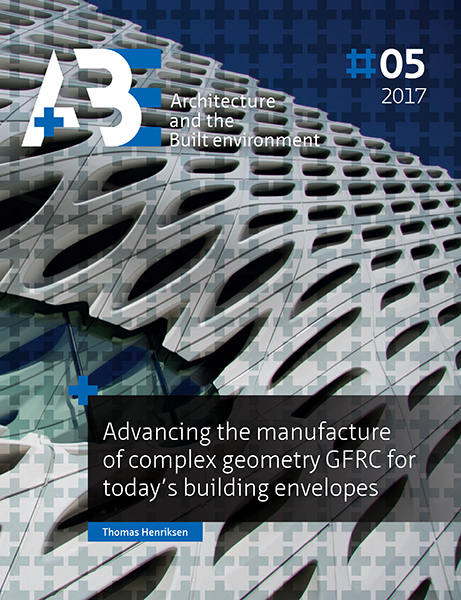Developing a solution for the premixed concrete method and proposing a step by step fabrication process.
DOI:
https://doi.org/10.7480/abe.2017.5.3641Abstract
Complex geometry concrete is being used in building and infrastructure projects however, costly in-situ mouldings are necessary to achieve these geometries. Advancing discretised concrete shell structures requires the development of a new moulding system at lower cost and reduced mould production times. Future thinwalled glass fibre reinforced concrete (GFRC) elements must possess good continuous surface quality, with the required edge-returns and panel offsets, combined with the physical material properties to increase spans and lower the risk of visible surface cracks. Existing moulding systems do not have the capability to meet these contemporary architectural aesthetic and design aspirations. A new mould system to produce free-form thin-walled GFRC elements is presented and can be used to replace CNC milled moulds for the manufacture of thin walled GFRC. Such a system allows the mould for thin-walled GFRC elements to be produced in a fast, cost effective and more efficient manner. A new step-by-step process to achieve such new thin-walled GFRC panels is described, permitting the fabrication of complex geometry thinwalled GFRC elements using more cost effective large-scale production methods. This process bridges the gap between the limited capabilities of current solutions, and the architectural aesthetic demands for good surface quality, with the option of having an edge-return and the same surface quality as the front surface to give a monolithic appearance.

